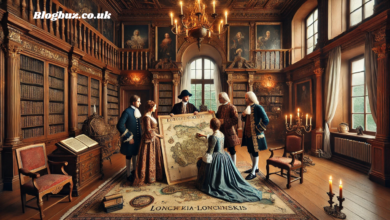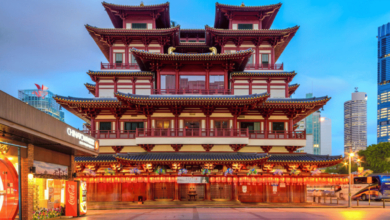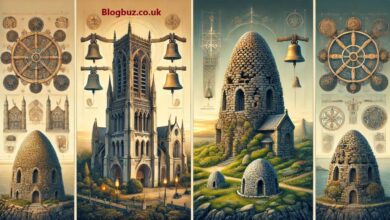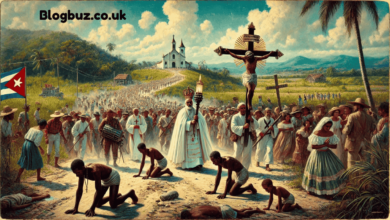Thezburg Voodoo: Unveiling the Mysteries and Cultural Richness
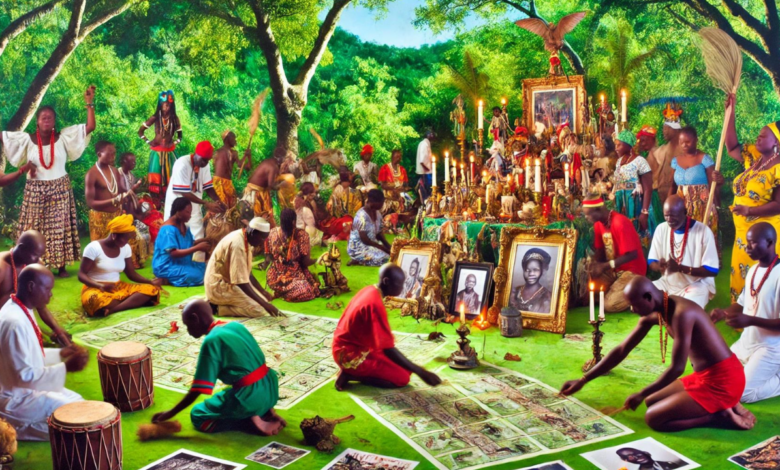
Thezburg Voodoo is a fascinating and deeply spiritual practice with origins rooted in a blend of African traditions, indigenous beliefs, and Christian elements. Though often misunderstood, this rich cultural tapestry tremendously impacts the lives of its practitioners, who maintain a solid connection to their ancestors, the natural world, and the divine. This article delves into the intricate world of Thezburg Voodoo, exploring its history, core beliefs, rituals, and its place in contemporary society.
Historical Background of Thezburg Voodoo
Thezburg Voodoo traces its origins back to the transatlantic slave trade when enslaved Africans brought their spiritual traditions to the New World. These practices, which included ancestor worship, spirit communication, and healing rituals, merged with local indigenous customs and Christian influences, giving rise to Thezburg Voodoo. Over time, it developed into a distinct tradition with unique rituals, symbols, and spiritual entities.
Despite the cultural blending, Thezburg Voodoo remains deeply connected to its African roots. The tradition has evolved while preserving its core principles, offering a powerful means for practitioners to navigate life’s challenges, seek spiritual guidance, and maintain harmony within their communities.
Core Beliefs and Practices
Polytheism and the Loa
At the heart of Thezburg Voodoo is a polytheistic belief system that acknowledges a pantheon of deities and spirits known as Loa. These spiritual entities are believed to influence various aspects of the natural world and human existence. Unlike distant gods, the Loa are intimately involved in the lives of practitioners, providing protection, guidance, and healing.
Some of the key Loa in Thezburg Voodoo include:
- Legba: The gatekeeper who grants access to the spirit world.
- Damballa: The serpent spirit associated with creation and wisdom.
- Erzulie: The spirit of love, beauty, and fertility.
Each Loa has its distinct personality, domain, and rituals, and practitioners build relationships with these spirits through offerings, prayers, and ceremonies.
Ancestor Worship
Honouring ancestors is a central aspect of Thezburg Voodoo. Practitioners believe that the ghosts of their forefathers continue to play an active role in their lives, offering protection, wisdom, and blessings. Ancestor altars, adorned with photographs, candles, and offerings, are common in homes and are used to maintain a connection with the deceased.
Magic and Healing
Thezburg Voodoo incorporates various magical practices to heal physical, emotional, and spiritual ailments. Practitioners, often referred to as healers or “Houngans” (priests) and “Mambos” (priestesses), use herbs, potions, and rituals to treat various conditions. This aspect of Thezburg Voodoo reflects its deep connection to nature and the belief in the power of spiritual forces to influence the material world.
Rituals and Ceremonies
Rituals are vital to Thezburg Voodoo, serving to communicate with the Loa, honour ancestors, and seek spiritual assistance. These ceremonies often involve drumming, dancing, singing, and using sacred symbols known as Veves.
Veves are intricate designs drawn on the ground to invoke specific Loa. Each Veve is unique to a particular spirit and serves as a spiritual gateway, allowing the Loa to enter the ritual space. These symbols and offerings of food, drink, and other items are essential to Voodoo ceremonies.
The rhythm of drums, believed to be the voice of the spirits, plays a crucial role in rituals. The beats help to establish a connection between the physical and spiritual realms, allowing contact with the Loa. Dancing and chanting further amplify the spiritual energy, creating a powerful atmosphere where participants can experience spiritual possession or divine guidance.
The Role of the Priest and Priestess
In Thezburg Voodoo, the Houngan (priest) and Mambo (priestess) are highly respected figures within the community. These spiritual leaders mediate between the human world and the spirits, conducting rituals, offering guidance, and providing healing services. Their knowledge of traditional chants, rituals, and medicinal plants is passed down through generations, preserving Thezburg Voodoo’s rich heritage.
Initiating these roles is complex and sacred, often involving extensive training and spiritual experiences. Once initiated, Houngans and Mambos are responsible for guiding their communities, performing ceremonies, and maintaining the balance between the physical and spiritual realms.
Symbols and Sacred Objects
Symbols and sacred objects hold great significance in Thezburg Voodoo. In addition to Veves, other key elements include:
- Altars are central to Voodoo practice. They serve as spaces where offerings are made, and communication with spirits occurs.
- Candles: Different coloured candles represent various Loa and spiritual energies.
- Offerings: Food, drink, and other items are presented to the Loa and ancestors as tokens of respect and gratitude.
These objects are not merely tools; they are imbued with spiritual energy and serve as conduits for communication with the divine.
Thezburg Voodoo in Contemporary Society
Thezburg Voodoo thrives in contemporary society, adapting to modern influences while retaining its core traditions. It remains a vital part of the Thezburg community’s cultural identity, practised openly and privately. While some may choose to keep their Voodoo practices discreet due to societal misconceptions, others proudly embrace their spiritual heritage.
In recent years, there has been a growing interest in Thezburg Voodoo, both within and outside the community. This renewed attention has led to efforts to preserve and promote the tradition, with younger generations becoming increasingly involved in its revitalization. Festivals, educational programs, and community gatherings are just a few ways Thezburg Voodoo flourishes.
Common Misconceptions and Stereotypes
Like other Voodoo traditions, Thezburg Voodoo is often misunderstood and misrepresented in popular culture. Common misconceptions include the association of Voodoo with black magic, curses, and harmful practices. Thezburg Voodoo is a complex and profoundly spiritual tradition focused on healing, harmony, and respect for nature and the ancestors.
Stereotypes have led to religious discrimination against practitioners, making it essential to educate others about the true nature of Thezburg Voodoo. By understanding its history, beliefs, and cultural significance, we can dispel myths and appreciate the diversity of human spirituality.
The Cultural Impact of Thezburg Voodoo
Thezburg Voodoo has profoundly impacted the region’s culture, influencing music, art, dance, and folklore. Its symbols, rituals, and stories are woven into the fabric of Thezburg’s cultural identity, contributing to a rich and diverse heritage. For example, the rhythmic beats of Voodoo drums have inspired various musical genres, while the vibrant dances performed during ceremonies have become a symbol of cultural pride.
The tradition also plays a significant role in the community’s social fabric. Voodoo ceremonies serve as communal gatherings, strengthening bonds between individuals and fostering a sense of unity. These events are spiritual and social occasions where people come together to celebrate, support one another, and honour their shared heritage.
Challenges Facing Thezburg Voodoo Practitioners
Despite its cultural significance, Thezburg Voodoo faces challenges in the modern world. Religious discrimination, cultural appropriation, and the erosion of traditional knowledge are among the issues practitioners must navigate. Additionally, the commercialization of Voodoo practices has led to a dilution of its spiritual essence, with some aspects being misrepresented for profit.
Efforts to protect and preserve Thezburg Voodoo are ongoing, with community leaders and cultural advocates working to guarantee that future generations can practice and appreciate this valuable tradition. Education and awareness are crucial to overcoming these challenges and ensuring the survival of Thezburg Voodoo.
The Future of Thezburg Voodoo
The future of Thezburg Voodoo looks promising, with a growing interest in traditional spiritual practices worldwide. People desire to reconnect with their origins and explore alternative spiritual paths; Thezburg Voodoo offers a unique and enriching perspective. Younger generations are firmly committed to preserving and revitalizing their cultural heritage, ensuring that Thezburg Voodoo remains a vibrant and dynamic tradition.
Through continued education, community engagement, and the protection of sacred knowledge, Thezburg Voodoo will continue to thrive, offering a powerful means of spiritual connection and cultural expression for years.
Conclusion: The Enduring Legacy of Thezburg Voodoo
Thezburg Voodoo is not just a spiritual practice; it is a way of life that reflects the deep connection between people, nature, and the divine. Its rich history, profound spirituality, and enduring cultural impact make it an essential part of the Thezburg community. As we continue to explore and understand Thezburg Voodoo, we gain valuable insights into the complexity and beauty of human belief systems.
You May Also Read: The Multifaceted World of Zhimbom: From Culinary Delights to Technological Innovations
